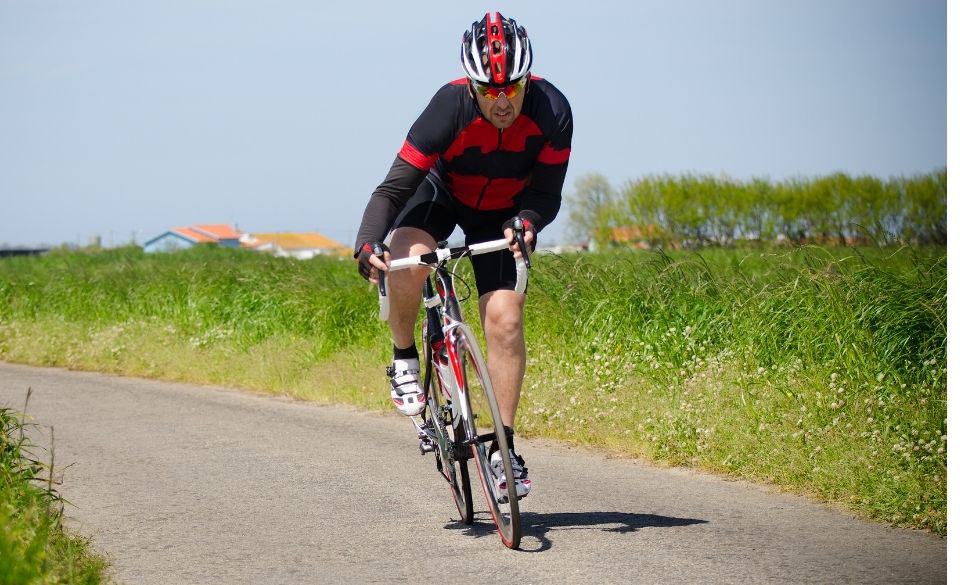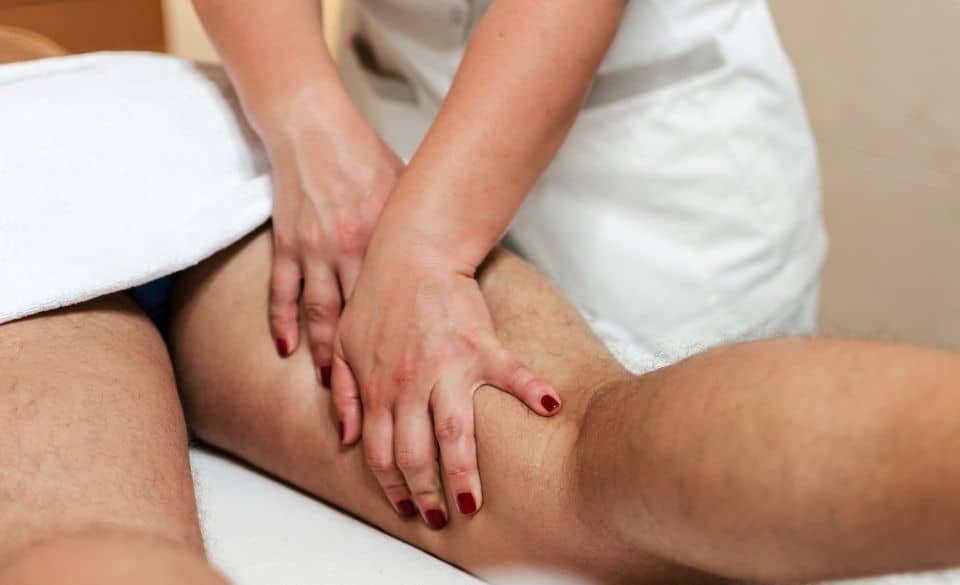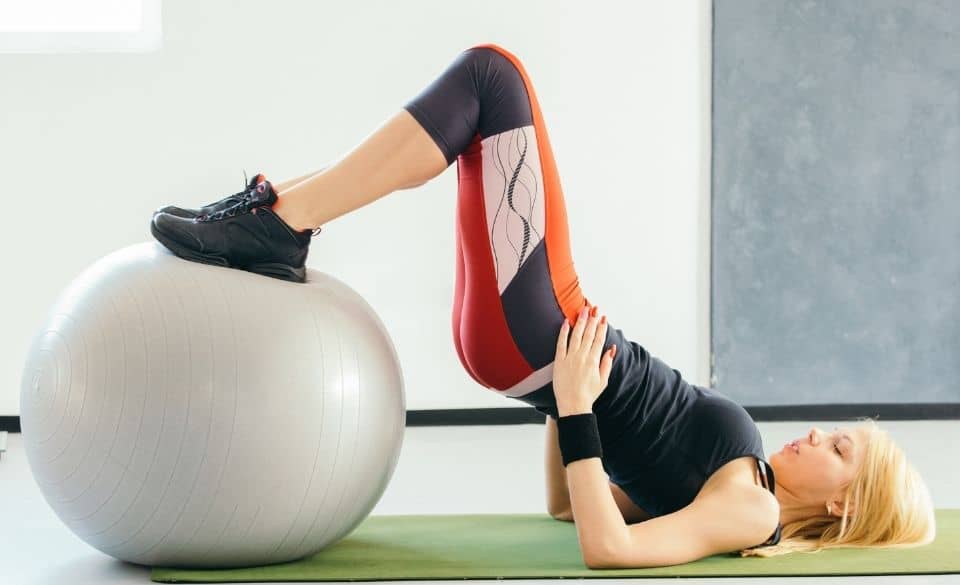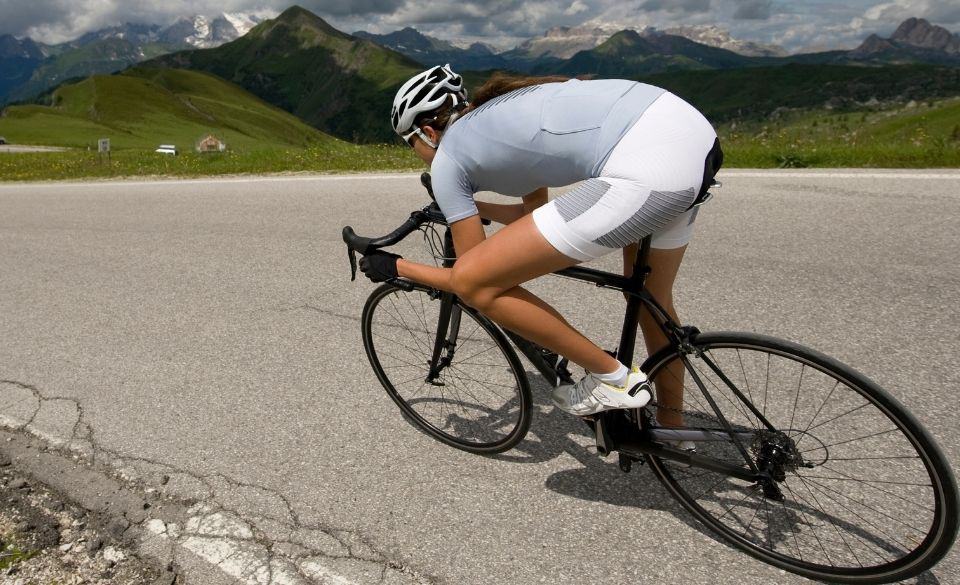
Sore Hamstrings After Cycling? Can You Cycle With A Hamstring Injury?
Page Contents
Unfortunately, since hamstrings play a vital role when pedaling, it is a common injury nearly all cyclists have experienced. Injuries can range from sore hamstrings after cycling to more severe grade 3 injuries tears. But the question is, what causes these problems? And can you cycle with a hamstring injury?
Sore Hamstrings After Cycling? Here’s What To Do
Many cyclists complain about sore hamstrings after cycling, but what causes this? And what does it mean for the cyclist?
Hamstring muscles naturally shorten when sitting for long periods, so it is not uncommon for the cyclist to experience tight hamstring muscles.
The hamstrings function is to bend the knee, acting as a lever to extend the hip. That means the hamstring is weaker when the hip is extended, as the gluteal muscles tend to take over and control the workload.
The hamstrings are vital in cycling when the knee is semi-flexed. That means when the knee is in a bent position the hamstring is at its strongest position. That means any reduction of length can adversely affect the function, causing damage, soreness, and pain.
Sore hamstring after cycling is typically caused by incorrect saddle height or fore-aft, as well as rapid acceleration or intense efforts in training. That is why you often see sprinters, football players, and runners experiencing common hamstring issues.
Hamstring injuries often result in a muscular tear or damage to the tendons, which is felt by a tearing or slight pop sensation. Less severe hamstring injuries caused by incorrect saddle height usually only cause a mild muscular strain. This means it may only take a matter of days or weeks to heal. If you experience sore hamstrings after cycling, check your bike and cleat position. Typically, saddle height, fore-aft, or cleat position are the main culprits causing overextension of the hamstring muscles.
Once you start experiencing sore hamstring muscles, it is vital to allow adequate recovery. If the injury is mild, you can introduce some light stretching or foam rolling exercises if there is no pain.

Can You Cycle With A Hamstring Injury?
When you are dealing with a hamstring injury it can be a painful and frustrating experience. This is especially difficult for cyclists, as the hamstrings are one of the key muscles used in cycling. While you may be eager to get back into training as quickly as possible, you must treat the strain correctly and allow adequate recovery. This will prevent further damage or prolong the recovery time.
Getting back into the saddle though will depend on the severity of the injury. A grade 1 strain or less severe hamstring injury may allow you to be back on the bike as quick as a few days. However, more severe strains (Grade 3) will require treatment from a doctor and physiotherapist and will require much more time to heal. This can often lead to staying off the bike until the hamstring can handle the pressure of pedaling.
Follow the R.I.C.E protocol (rest, ice, compress and elevate) can help speed up recovery if you are dealing with a Grade 1 injury. But it is important once back on the bike you start to introduce stretching and foam rolling into your cycling training plan.

Hamstring Exercises For Cyclists
There are multiple hamstring exercises for cyclists that can not only help benefit your cycling but increase the strength and functionality of the muscles.
Glute Bridge Raises
Although mainly focusing on the glute muscles, the glute bridge exercise is a good introduction to some light hamstring work. Important if you have just returned from the light hamstring strain.
Start by lying on your back with your knees bent to 90 degrees. With your heels pressed to the floor, place both hands on either side. Then push your hips towards the sky while squeezing both your hamstrings and glutes.
Bodyweight Leg Curls
If you spend multiple days a week in a gym, you would be familiar with leg curl machines. While these are good for overall hamstring strength often they place too much stress on the hamstring when coming back from injury. Instead, try doing swiss ball leg curls:
Start by lying on your back and place your heels on top of the swiss ball. Drive your hips upwards and then bend your knees so the ball comes towards you. Hold that position for a few seconds and then straighten the legs back out again. Make sure to squeeze your hamstrings when you pause for a few seconds.
Another variation of hamstring exercises for cyclists is the single leg straight leg deadlift. This exercise is only recommended if you have a healthy hamstring and currently are not recovering from any previous hamstring injuries.
Remember coming back from any type of injury takes time and patience. Any exercise you do should start with using bodyweight before adding excess weight.

Upper Hamstring Pain While Cycling
When cycling, it’s not uncommon to feel upper pain in the hamstring. Most of the time this is caused by the incorrect saddle or tight lower back muscles. Cyclist’s who experience upper hamstring pain typically don’t activate their gluteal muscles well and rely on using just the hamstring muscles. First, check you are using the correct saddle through a bike fitter. Then secondly look to loosen up the lower back through foam rolling exercises or stretching.
Once you have fixed any position issues on the bike and loosened up surrounding muscles, you can start activation exercises on and off the bike.
One of these exercises on the bike is single leg drills. Although it is important to drive the pedaling from the glutes and not the hamstrings.
Begin by warming up for 10-15 minutes. Once your warm-up is complete, unclip one leg and let it dangle next to the bike or on the quick release. Focus on pedaling in a circle by pushing and pulling, during each phase of the stroke make sure you are firing the gluteal muscles. Start by doing 15-second efforts and build the duration or repetition number up each week.
Hamstring Tendonitis Due To Cycling
Unfortunately, if you experience hamstring tendonitis due to cycling the recovery time can vary between people. Hamstring tendonitis occurs when the tissue surrounding the muscles of the knee, pelvis, and lower legs get irritated or inflamed. This can often cause symptoms such as:
– A burning or sharp pain
– The weakness of the joints and muscles
– Aching or a dull throbbing feeling
– Stiffness in both the joints and muscles
– Inflammation and/or swelling
For most cyclist’s it is possible to self-diagnose at home through some tests. One test used can help identify the severity of the injury.
Start by lying on your back with a bent knee and then slowly straighten the leg to 90 degrees. Alternatively, you can try pulling or flexing the foot toward the chest. If either of these exercises causes pain you most likely have hamstring tendonitis.
Luckily if you don’t experience pain during these tests you can start applying the RICE method (rest, ice, compression, and elevation) for 72 hours. The ice will make the blood vessels constrict, decreasing blood flow and, in turn, swelling. Then you will start slowly able to return to an easy cycling plan.



